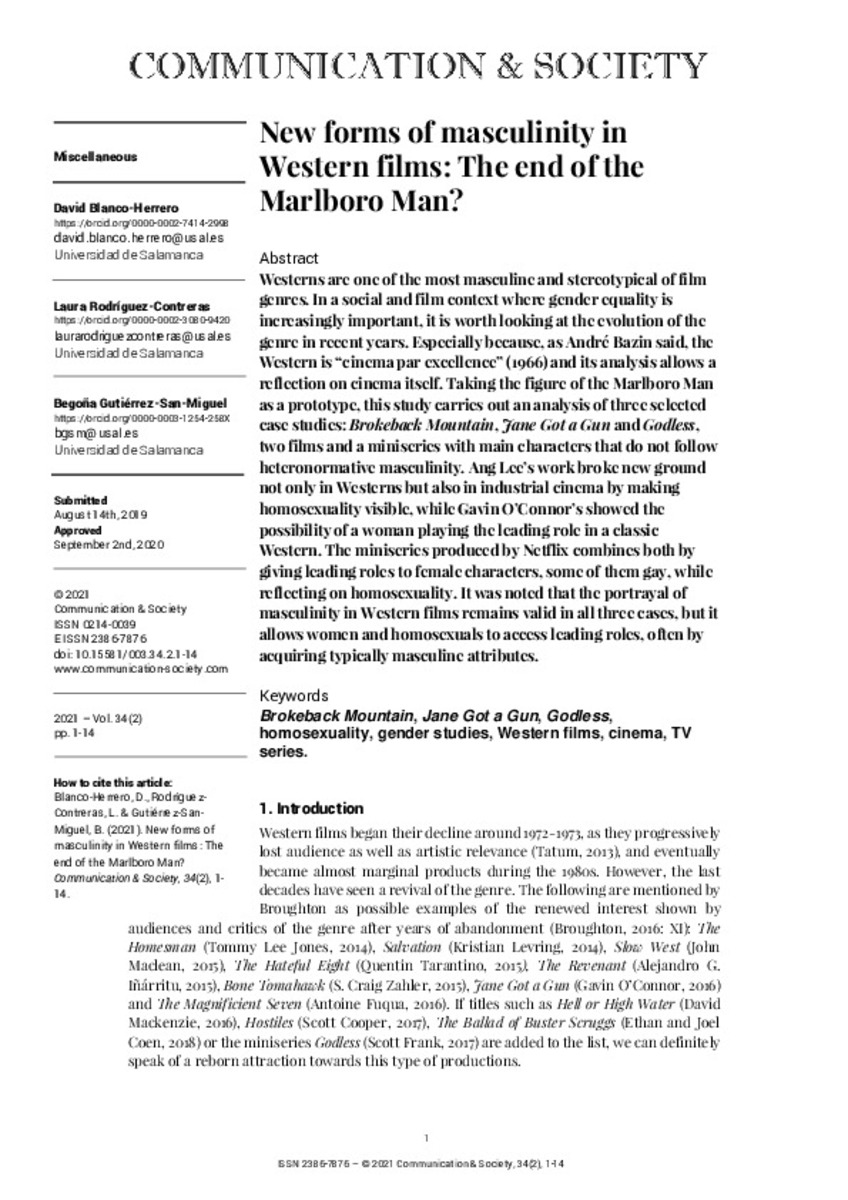New forms of masculinity in Western films: The end of the Marlboro Man?
Fecha de publicación :
2021
Editorial :
Servicio de Publicaciones de la Universidad de Navarra
Cita:
Blanco-Herrero, D. (David); Rodríguez-Contreras, L. (Laura); Gutiérrez-San-Miguel, B. (Begoña). "New forms of masculinity in Western films: The end of the Marlboro Man?". Communication & Society. 34 (2), 2021, 1 - 14
Aparece en las colecciones:
Estadísticas e impacto
0 citas en

Los ítems de Dadun están protegidos por copyright, con todos los derechos reservados, a menos que se indique lo contrario.








